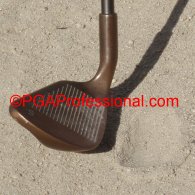Ask the Pro Archive - 2013
|
Here are all the golf questions and answers that appeared on the "Ask the Pro" page in 2013, from most recent to least recent, top to bottom. Links in the left menu column give a "keyword" indication
of the topic and will take you directly to that entry on this page. Also see the Ask the Pro Archive Index for longer descriptions in categorized and somewhat alphabetized form.
|
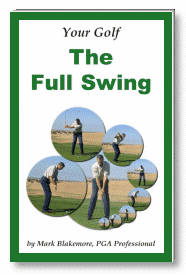 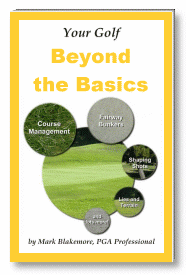 |
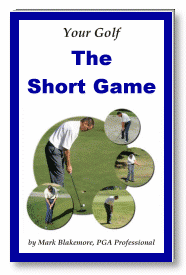 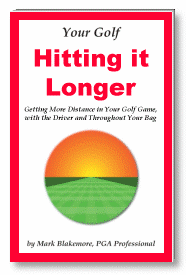 |
Answer:
Hi Josef,
You most likely have too steep an angle of approach. You probably need to catch the ball more on the upswing.There are a number of adjustments you can make if this is the problem. But it is usually a combination of adjustments, so working with a knowledgeable professional in person is most effective, not only to verify the problem but also to most directly fix it.
Also get fitted (at least for your driver if not all your clubs) in person with a reputable professional with club fitting expertise. Also see Getting more distance and Getting a lower trajectory on drives and the What clubs should I get? FAQ.
Thanks for visiting PGAProfessional.com and best of luck with your game. MB
Rules, Etiquette and Procedures > Carrying a left-handed club if you are a right-handed
Question:
December 6, 2013
Can you legally carry a left hand club in [your] bag if you are a right-handed player?
Jerry Rininger
Allegan, MI
Answer:
Sure, Jerry, but it counts as one of your fourteen. Thanks for visiting PGAProfessional.com and best of luck with your game. MB
Long Game > General > Difference between "Hitter" and "Swinger"
Question:
November 22, 2013
Please explain the difference in a "hitter" and a "swinger."
Bonitha Morrow
Biloxi, MS
Answer:
Hi Bonitha,
The short answer is: a hitter generally uses arm and hand muscles to apply force and a swinger generally uses more torso rotation and more passively swinging arms and hands. Thanks for visiting PGAProfessional.com and best of luck with your game. MB
Rules, Etiquette and Procedures > Limit on number of practice swings, slow play
Question:
November 8, 2013
How many practice golfs swings are permitted before each shot? We are experiencing a lot of slow play and hope there is a ruling.
Edith Checkley
Winnipeg, Manitoba, Canada
Answer:
There is not a rule about that, Edith, but check with your course administrators for their slow play or time-per-round policies, and their instructions for the marshals. Thanks for visiting PGAProfessional.com and best of luck with your game. MB
Long Game > Irons > Controlling the amount of backspin on iron shots
Question:
October 30, 2013
I hit ALL of my irons thin, but with good contact and consistent distance. ...I ALWAYS have a lot of back spin. In fact, I recently hit a soggy green with a 7 iron and found my ball sitting 2 inches left of the ball mark. ...not a terrible problem to have. But how do I change the spin of my ball on my iron shots?
Lance Clark
Roby, TX
  |
  |
Answer:
Hi Lance,
If you are hitting the ball thin that implies poor contact by definition, so I assume you mean that you are picking the ball off the top of the grass rather than taking a divot after the ball.
Also, not only is keeping the ball very near where your ballmark is desirable but it is almost guaranteed on a soggy green, regardless of whether you have a lot of backspin or a little.
But to answer your question, the easiest way to change the amount of spin on your iron shots is to vary the club head speed (i.e., slower speeds create less spin and vice versa). That topic is covered in detail in my book "Beyond the Basics."
Also see my article on punch shots.
Thanks for visiting PGAProfessional.com and best of luck with your game. MB
Rules, Etiquette and Procedures > Brushing aside hailstones
Question:
October 5, 2013
We had a hail storm while playing golf. I started to remove the hail stones with my putter sweeping them across the line of my putt. I was told that is a breach of the rules.
Michael Geeson
Ilkeston, Derbyshire, UK
Answer:
According to the rules—unless you pressed anything down while doing so—it sounds like there was no problem. See the Rules of Golf: Definition of "loose impediments," Rule 16-1, and my rules FAQ.
Thanks for visiting PGAProfessional.com and best of luck with your game. MB
Long Game > General > Down-the-line arm/shaft angle at impact
Question:
September 20, 2013
It seems desirable to form a 144 degree angle with shaft and forearms at address. What should happen to this angle during the swing and especially at impact? It would seem that if it changes one would expect to mishit.
Andrew Wuskell
West Hartford, CT
Answer:
Hi Andrew,
The exact angle will vary from club to club and from person to person. But assuming that there was an angle that was ideal, then in theory the general concept would be to return through impact at pretty much that same angle. And yes, if all else remained the same and just that angle changed it does make sense that it might cause a problem to some degree, depending on how big the change was. But in the real world, and from swing to swing, a lot of other things might happen, and the adjustments that one ends up making to correct are part of the trial and error, feel and experience deal.
Thanks for visiting PGAProfessional.com and best of luck with your game. MB
Miscellaneous > Professional golf-related > Prize money if an amateur wins a professional event
Question:
September 9, 2013
If an amateur wins a [professional] tournament what happens to the 1st place prize money?
Don Bunch
Dobbs Ferry, NY
Answer:
Hi Don,
Prize money just gets bumped down to the next professional. There may be variations. Check with the sanctioning body/committee of the event in question for details.
Thanks for visiting PGAProfessional.com and best of luck with your game. MB
Long Game > General > Single digit handicap at home course, trouble on other courses
Question:
August 29, 2013
There are two holes on my home course which always give me trouble and I know the problem is [in] my head. No matter what I say to myself to get a positive attitude as I approach the tee, 4 times out of 5, I am in trouble. Any tips on how to clear away the negative thoughts which are deep in the subconscious? Thanks.
Duncan McNeill
Montreal, Quebec, Canada
  |
  |
Answer:
Yes, Duncan. Try this for starters:
Go out some time very early in the morning, or very late (just before dark), and play only those two holes over and over and over again, using many balls and trying many different approaches (e.g., different clubs off the tee, different places to aim, etc.) Try to do this on a number of occasions. At some point you will be comfortable with those holes. I'd have to see the holes to give you any specific strategic advice on how to play them. That topic is covered pretty thoroughly in my book, Beyond the Basics.
Also see my article about dealing with nervousness on the course.
Thanks for visiting PGAProfessional.com and best of luck with your game. MB
Rules, Etiquette and Procedures > Why players mark short putts instead of finishing
Question:
August 8, 2013
Why do players who putt to within a foot or two of the hole not play through and finish rather than placing a marker behind the ball and picking it up?
Charles Salzmann
New Port Richey, FL
Answer:
Hi Charles,
The most common reason is that they would be stepping on another player's line if they hit the next putt. Another reason might be that the player elects to wait to finish as a courtesy to the other player(s) in the group: like in situations where the spectators might get wildly excited or race off to the next tee to get a good place to stand, etc. But it also might just be that they want to make sure the ball is clean before putting. See this archive entry on why to mark and replace very short putts, too.
Thanks for visiting PGAProfessional.com and best of luck with your game. MB
Equipment > Shorter players cutting down clubs
Question:
July 21, 2013
I am a 4 ft. 11 inch, petite woman. I had clubs custom fit for me but still have trouble with my long irons, 3, 4 and 5. Hybrids same thing. What would I sacrifice if I had them cut shorter, say the length of my favorite club, the 6 iron?
Joan Adams
Algonquin, IL
Answer:
Hi Joan,
If you can get the swing weight balanced with the shaft flex and the length of the club you will probably gain something, rather than sacrificing. But just cutting the length alone may cause trouble. Get with a reputable local professional with club fitting expertise and see what can be done.
Thanks for visiting PGAProfessional.com and best of luck with your game. MB
Rules, Etiquette and Procedures > Marker also records their score on scorecard
Question:
July 6, 2013
In club or society competitions should the marker record his score on the card?
Barry Martin
Mazarron, Murcia, Spain
Answer:
Hi Barry,
It's common practice in competitions for players to exchange scorecards and keep the score of (be the marker for) another player in the group. But you should always keep track of your own score too. In many, if not most, cases competition scorecards have a place for that.
Thanks for visiting PGAProfessional.com and best of luck with your game. MB
Miscellaneous > Other > Single digit handicap at home course, trouble on other courses
Question:
June 26, 2013
I am a 6 'cap at my own course but when I play others it seems like I can't break 85 or 90. What am I doing wrong?
Mark Ayres
Kamloops, British Columbia, Canada
  |
  |
Answer:
Hi Mark,
Well, that sounds like a pretty classic case of being real familiar with your home course and not with the others. Under the broad umbrella of "experience" there are a huge number of variables. If you've been playing your home course for a while you are probably so familiar with all the things that outside players would consider "local knowledge" that you take them for granted (things like knowing where the trouble is, where to aim, how the fairways and greens behave, depth perception using various landmarks, and a host of other things that you have picked up from lots of trial and error on that course). But when you go to other courses you don't have much, if any, of that going for you. It takes a while to gain that knowledge, but after just a few times around a course you start to get most of the important stuff—the more subtle things come as you continue to play it.
So the solution is to get lots of experience on lots of courses, and eventually your instincts for playing shots—or being conservative in situations where you don't have a good feel for what is going on—will improve. You didn't mention how long you had been playing, but to get to a 6 it probably has been quite a while. A true measure of a golfer's skill level is certainly better demonstrated across a wide variety of courses, rather than on just one. But if you usually play just one, realize that when you go to other courses it makes perfect sense that your lesser knowledge of, and feel for, the course would typically result in somewhat higher scores.
Thanks for visiting PGAProfessional.com and best of luck with your game. MB
Miscellaneous > Professional golf-related > Do touring pro's play with different clubs and balls?
Question:
June 10, 2013
Do tour pro's hit a different ball than what we buy off the shelf? And also do they hit clubs with special setups than what we buy off the shelf? And is this why they can hit a 9 iron 30 yards further than most people?
Jon Brown
Murray, KY
Answer:
The answer to the first two parts of your question might be yes, but the details may disappoint you: In some cases the golf balls might be more consistently tested and their clubs may be fitted very finely, and so on, but nothing in either case that exceeds the Rules of Golf. Neither of those, however, is the reason they can hit the ball farther than most people. The reason is basically quality technique and contact, and golf-specific athletic ability.
That might be an interesting question to ask directly to tour players for their answers. See the Tours' websites, and the players' personal fan pages, etc. Thanks for visiting PGAProfessional.com and best of luck with your game. MB
Miscellaneous > Terminology - Words and Phrases > What am I "laying" or "lying?"
Question:
May 20, 2013
I have a terminology question I hope you can clarify. If I have hit my ball 3 times (for example) am I laying 3 and shooting 4 or am I laying 4? We are confused about how to describe this. Thanks!
Liz Blanch
Cleveland, OH
Answer:
Hi Liz,
If you have hit the ball 3 times and there are no penalty strokes involved you are (or your ball is) lying 3 and your next shot will be your 4th.
Now the word usage bit (I had to check this). According to grammar gurus the correct word is lying and not laying. When some object (e.g., a golf ball) is resting on something (e.g., the ground) it is lying there, not laying there. We'll just stick with the present tense for now and the "setting" or "reclining" use of the word—it gets a bit more involved if you change tenses or use the word for other meanings (like telling a lie, engaging in sexual activity, etc.). There are many good references on the web for grammar and word usage if you'd like to find out more.
Thanks for visiting PGAProfessional.com and best of luck with your game. MB
Rules, Etiquette and Procedures > Limit number of putts to play faster
Question:
May 6, 2013
To speed recreational play, how about making every green an automatic 2 putts so golfers won't be camping out studying the greens?
Keith Flaming
Bakersfield, CA
Answer:
I understand the spirit of the question, Keith, but I doubt you'll get much agreement. Question: how about if you just make every green an automatic 3-putt?
If nobody in your group posts scores for handicap puposes and you don't compete with each other, then go for it. All you have to do is agree amongst your group and realize that you are not actually playing by the rules.
Off the top of my head I can think of another problem, though. At the speed of play you are implying with your suggestion, you will constantly be bumping up against the group in front of you. And it is not reasonable to expect that you could just continually play through every group you catch up to. So there is that weak link in the chain, too.
But how about this: agree to your suggestion within your group (realizing that you are not playing by the Rules of Golf—and not caring), and then always set up your tee time to be the first group on the course. That way you can play as fast as you want to—you might even set some kind of world record for speed, or something. Let me know if you do. And let me know if your group accepts the suggestion. Also see my article on Honor, Away and Whose Turn is it to Play?
Thanks for visiting PGAProfessional.com and best of luck with your game. MB
Long Game > General > Grip pressure, how to hit through and take turf with a light grip
Question:
April 25, 2013
I keep hearing hold the club like you would a bird but how do you hit through it and take turf?
Roy Malkosky
Downers Grove, IL
  |
  |
Answer:
Hi Roy,
That is actually a pretty involved topic, and it is covered in detail in my books "The Full Swing" and "Hitting it Longer." (Click on any of the book pictures here on the sides, or see below for more on my books.)
Generally, "holding it like a bird" (or the long version, "hold it like you would hold a bird if you did not want it to get away but also did not want to hurt it") is an old saying, like keep your head still, that is most likely bad advice, depending on how it is interpreted. You may also have heard the timeworn "hold it like you would hold a tube of toothpaste and try not to squeeze any toothpaste out." Let's face it, these are exaggerations—but, in a way, valid because most people squeeze way too tightly.
If your hands are relaxed enough to function relatively passively—rather than tightly and actively—the club will swing more consistently, and it will be the mass of the body as a whole and the natural location of the bottom of the swing that provides the compression, divot, and follow-through, etc.
Swing technique is covered in detail in my books "The Full Swing," "Beyond the Basics," and "Hitting it Longer." (Get the books.)
If you ever visit the San Francisco bay area you can work on your game with me in person.
Thanks for visiting PGAProfessional.com and best of luck with your game. MB
Equipment > Grip size, standard, and "wraps"
Question:
April 8, 2013
I have just had my clubs re-gripped and I checked on the Internet on the size of my grip. It said that I required a men's standard + 3 wraps. The shop has told me that they put on 3 wraps but the grips feel very small in the hand. What is men's standard? ...so many wraps then + 3 or is it the size of the grip?...
Mike Black
Jakarta, Java, Indonesia
Answer:
Hi Mike,
My first recommendation is to have your grips fitted in person by a reputable professional with club fitting expertise—especially at a place where you can feel and test a wide variety of grip brands and styles. Next, "standard" may vary between manufacturers and geographical areas (another good reason to be fitted in person).
All else being equal, a "wrap" adds one sixty-fourth of an inch (1/64") to the diameter of the grip. However, shaft butt and grip core sizes factor in as well. See the other posts (below) for more, and also check with a local club repair person or different manufacturers for more detail on specific grips.
Related posts: Shaft butt diameters, grip core diameters, Grip size and its effect on shots, Larger grip sizes terminology, and Getting smaller grips. Thanks for visiting PGAProfessional.com and best of luck with your game. MB
Rules, Etiquette and Procedures > Put an identifying mark on your ball
Question:
March 20, 2013
The rules state that a player SHOULD put an identification mark on his ball. What is the ruling if he does not?
Alison Kirk
Denny, United Kingdom
Answer:
Hi Alison,
Maybe nothing, if nobody else in the group is playing the same brand, model and number ball. But if there are two people doing so, and they both hit the ball into the same area and there is a question as to which ball is which, they both have to be declared lost. That's a pretty good reason to put a unique identifying mark on your ball—heh heh heh.(See Rule 12-2 and Decision 27-10, and the rules FAQ.)
Thanks for visiting PGAProfessional.com and best of luck with your game. MB
Equipment > Effective bounce
Question:
March 7, 2013
What is effective bounce?
Dan Challgren
Van Nuys, CA
Answer:
Hi Dan,
That's a bit of a can of worms, but the easiest way to approach it is probably to ask what is the difference between bounce angle and effective bounce? The bounce angle of a club is a static measurement of the angle of the sole relative to the shaft and a level base. (Since soles are not usually perfectly straight, or flat, the bounce angle is really kind of an average of the curve.)
Depending on who you talk to, effective bounce is a static measurement also. As I understand it, it's easiest to think of it as the volume of space between the level base mentioned above and the sole of the club (see top picture). That varies from club to club, not only because of the bounce angle, but also based on how deep the sole is from front to back (leading edge to trailing edge) and the curve of the sole—all effecting how high the leading edge of the club is off the ground and this volume of space I'm talking about.
You can see from the rough image above that as the size of the sole and the bounce angle change so does the volume of the black triangle underneath In the image above you can see the small depression left in the sand by the sole of the wedge just in front of the club
Another way you could see the effective bounce, or this volume of space under the sole, is to find a really smooth level patch of sand in a bunker, turn your wedge square and hold it at its normal lie angle, and then press it straight down into the sand, all the way until the leading edge is level with the top of the sand but no farther, making an impression in the sand. Carefully pull the wedge out of the impression and you will see the cavity. That is the volume of space, or effective bounce (see bottom picture).
Now, to me, since golf clubs are not necessarily delivered to the ground in a swing in the same position that they are measured in loft-lie machines or other devices, I think you can see that we have to consider what actually happens in the swing, too—if we truly want to understand the effective bounce in real time. (This might only be measurable by high speed video, and maybe not even very well then.) In an actual swing the angle of approach, face angle, and shaft angle at impact are also going to effect that volume of space under the sole and how the club reacts with the ground (grass, sand, etc.); so the static measurement still may not really be enough... Like I said, can of worms. But at least you can see the difference between bounce angle and effective bounce… I think.You might be able to get a much more elegant explanation from a club making and repair guru in person, but that's my shot at it.
Determining which clubs work best for you in which situations is part of the whole time and experience aspect of developing your golf game, and personal preference will have more and more to do with that the more skilled you get. But very generally, wedges with a large bounce angle and a deep/big sole are more functional in thick sand or long grass. And vice versa, wedges with small bounce angles and thinner soles are better for more firmly packed, or coarser, sand and shorter grass.
Thanks for visiting PGAProfessional.com and best of luck with your game. MB
Long Game > General > Too much fidgeting at address, can't get still
Question:
February 24, 2013
I have been playing for a number of years now ... only ... a few times a year. This year I ... am now playing several times a week. What I have noticed now is that once I address the ball I can't seem to get still. It seems like I fidget with my stance and grip over and over. If I am on the driving range I have no problem at all, I just step up and hit the ball... Do you know of anything or any drills that will help me relax on the course?
Michael Brock
Chatsworth, GA
  |
  |
Answer:
Hi Michael,
From your description it sounds like you need to become aware of and tune into -- or flow with -- your natural rhythm (the amount of time it generally takes for you to comfortably set up and swing on a shot), and then stay with that basic rhythm on all swings, rather than changing to something different, or with more thinking, etc., on the course.
Sure, this may be easier said than done, right at first. It sounds like you can already do it on the range. But maybe on the course you over-think, or try to think too many things, in an attempt to have more "control" over the shot, etc. (It doesn't sound like you do this on the range and you don't seem to have a problem with your control there.)
A little bit of fidgeting (adjusting feet, arms, hands, posture, waggling, etc.) is normal, and a good thing: it keeps the tension out. If you watch good players closely you'll see that almost nobody ever gets completely still -- at least not on long game shots. But it sounds like you are talking about too much. Not to worry; there have been great players who processed their way through the same thing. Once you become more certain of your technique your overall rhythm will probably get smoother. This is also something that would best be worked on with a reputable golf professional or mental game coach in person. I can only give you some general suggestions here.
A pre-shot routine will help a lot with this as you go. I would also suggest that you read through Dealing with Nervousness on the Golf Course and see Mental Game Resources.
Swing technique is covered in detail in my books "The Full Swing," "Beyond the Basics," and "Hitting it Longer." (Get the books.)
If you ever visit the San Francisco bay area you can work on your game with me in person.
Thanks for visiting PGAProfessional.com and best of luck with your game. MB
Miscellaneous > Other > The benefits of playing golf
Question:
February 14, 2013
I want to know the good benefits about golfing, to entice my young grandson.
Teena Mast
Frankton, IN
Answer:
Hi Teena,
Wow, there are a lot (though your grandson may not care about all of these, depending on his age):
- Fun
- Beautiful, outdoor, nature time
- Develops hand-eye coordination and overall body control
- Lifetime sport/hobby, starting at just about any age
- Social, or not social (your choice)
- Very challenging (physically and mentally), so potentially very rewarding
- Great exercise, if you walk* (4-5 miles every time you play 18 holes)
- Develops the brain too - requires thinking/analyzing to excel
- Many people do business-related interacting while playing golf
- Endlessly rich: broad and deep, lots of variables - each golf course, each round of golf, each shot is unique
The list is probably longer. If anybody reading this knows of a good benefit that I have not mentioned and I will add it to the list. Thanks for visiting PGAProfessional.com and best of luck with your game. MB And Happy Valentine's Day to all.
* Maybe pretty decent exercise even if you ride (if carts are required to stay on cart paths where you play)
Long Game > General > Staying down through the ball after surgery
Question:
January 22, 2013
After a long layoff due to surgery I am now having a problem staying down. Especially with the short irons. What can I do to stop this?
Randy Crews
Bedford, TX
Answer:
Hi Randy,
If the problem is physical I would suggest (continuing with) physical therapy, if that is indicated for your issue, getting into Yoga and gradually increasing your flexibility and physical awareness. If the problem is mainly mental I would still recommend the Yoga, but also see this previous post on looking up. Thanks for visiting PGAProfessional.com and best of luck with your game. MB
Rules, Etiquette and Procedures > The year dropping the ball from shoulder height started
Question:
January 6, 2013
When did the rule for dropping a ball change from over the shoulder to the arm straight out from the shoulder?
Wayne Mainor
Montgomery, AL
Answer:
I do remember that happening. But I couldn't recall exactly when it was. According to Golf Rules History the rule changed to dropping from shoulder height in 1984. Thanks for visiting PGAProfessional.com and best of luck with your game. MB


